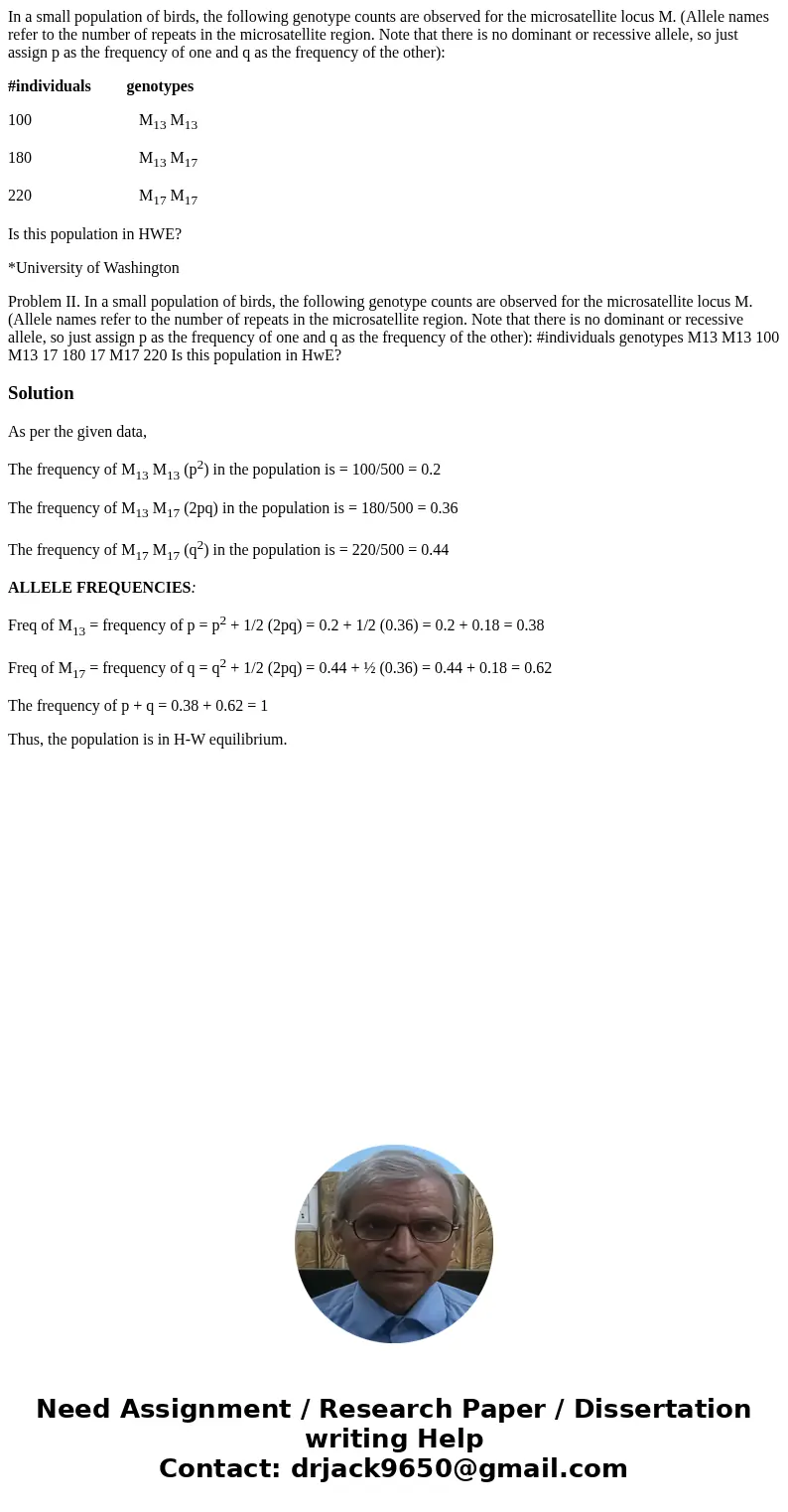In a small population of birds the following genotype counts
In a small population of birds, the following genotype counts are observed for the microsatellite locus M. (Allele names refer to the number of repeats in the microsatellite region. Note that there is no dominant or recessive allele, so just assign p as the frequency of one and q as the frequency of the other):
#individuals genotypes
100 M13 M13
180 M13 M17
220 M17 M17
Is this population in HWE?
*University of Washington
Problem II. In a small population of birds, the following genotype counts are observed for the microsatellite locus M. (Allele names refer to the number of repeats in the microsatellite region. Note that there is no dominant or recessive allele, so just assign p as the frequency of one and q as the frequency of the other): #individuals genotypes M13 M13 100 M13 17 180 17 M17 220 Is this population in HwE?Solution
As per the given data,
The frequency of M13 M13 (p2) in the population is = 100/500 = 0.2
The frequency of M13 M17 (2pq) in the population is = 180/500 = 0.36
The frequency of M17 M17 (q2) in the population is = 220/500 = 0.44
ALLELE FREQUENCIES:
Freq of M13 = frequency of p = p2 + 1/2 (2pq) = 0.2 + 1/2 (0.36) = 0.2 + 0.18 = 0.38
Freq of M17 = frequency of q = q2 + 1/2 (2pq) = 0.44 + ½ (0.36) = 0.44 + 0.18 = 0.62
The frequency of p + q = 0.38 + 0.62 = 1
Thus, the population is in H-W equilibrium.

 Homework Sourse
Homework Sourse